As of April 1, Making Stories is closed. Thank you for your support all these years!
As of April 1, Making Stories is closed. Thank you for your support all these years!
Spinning Fiber
Notions & Gifts
Books, Magazines & Patterns
About Us
We're here to help you stitch sustainability into every aspect of your making.
With our carefully curated selection of non-superwash, plastic-free yarns and notions, we have everything you need to get started on your next project - and the one after that.
Here's to a wardrobe of knits we love and want to wear for years to come!
We're here to help you stitch sustainability into every aspect of your making.
With our carefully curated selection of non-superwash, plastic-free yarns and notions, we have everything you need to get started on your next project - and the one after that.
Here's to a wardrobe of knits we love and want to wear for years to come!

Our Sustainability Pledge

Our Blog

Our Podcast
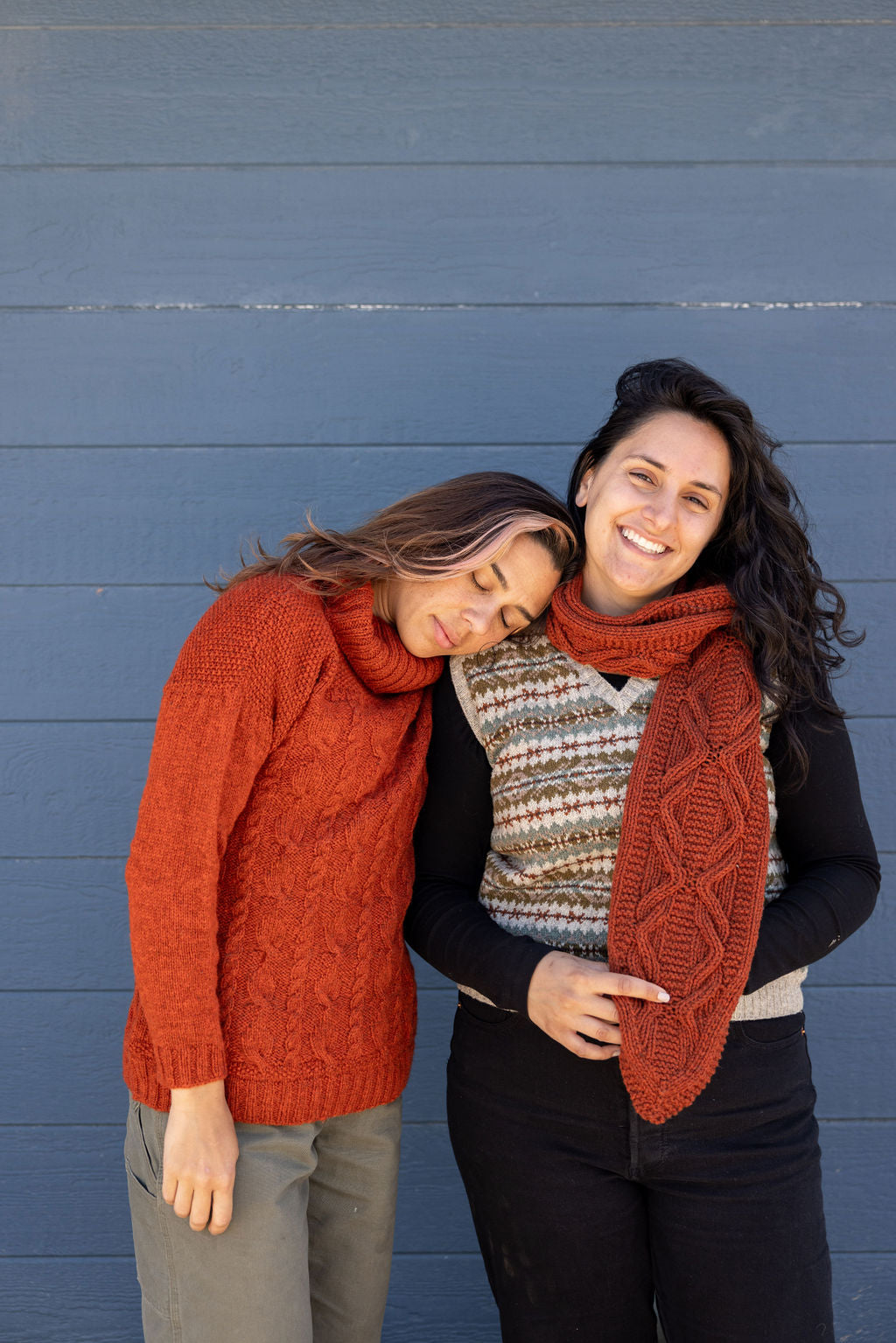
The Making Stories Collective
How to Knit with Linen Yarn
April 19, 2023 3 min read 3 Comments
Hello, lovelies! Today, we are talking about one of our favorite warm-weather fibers; Linen.
Linen is such a unique fiber, and working with it is extremely rewarding, but it can have its challenge as it doesn't have the elasticity and bounce of wool or other fibers. Due to this, linen yarns sometimes get a bad name, leading knitters to cast on with negative expectations from the start, or even shy away from them altogether!
If you are new to linen yarns they can feel unfamiliar and even a little uncomfortable at first, but with an open mind and all the handy tips and tricks we’re sharing with you in this post, you’ll be binding off your new favorite linen top in no time and wearing it for years to come.
Before we dive in, let's take a look at why we love linen yarns:
- Durability: Linen is a strong and durable fiber, so garments and accessories can stand up to lots of wear.
- Breathability: Linen is highly breathable, making it an excellent choice for warm-weather garments such as summer tops and tees. It also has moisture-wicking properties, which can help keep you cool and dry.
- Sustainability: Linen is a natural fiber that is produced from the flax plant. It is biodegradable, and the production process uses fewer resources than other fibers such as cotton.
- Softness: While linen may feel stiff and scratchy at first, it becomes softer with each wash and creates a fabric with beautiful drape which can make the most of delicate lace stitches and simple textures.
- Colors: Linen takes dye beautifully and the smooth surface of the fiber reflects the light creating a stunning luster. In case you need convincing, check out the color palette of Antigone!
So are you ready to cast on with a gorgeous linen yarn? Let's take a look at our top tips for working with this beautiful fiber!
Wash your yarn:
When using linen yarns, they may at first feel rough or scratchy. Don't worry, this is normal and the yarn will become softer with each wash, but if it's something that bothers you during knitting, soak it in warm water for at least 30 minutes to help soften the fibers and make them easier to work with.*
*Important: Make sure your yarn is fully dry before you begin knitting with it, and if your yarn is in a ball be sure to convert it into a skein first before soaking. Check out this post from Spruce Crafts if you are unsure how to do that!
Relax:
As mentioned, linen doesn't have as much elasticity as other fibers, so it can feel like the stitches on the needle are too large. This leads to knitters pulling the yarn too tight and creating an uneven tension. Try to keep your stitches relaxed and be guided by your final swatch and gauge. If the fabric isn't right, adjust your needle size and swatch again. It will make for a much more enjoyable knitting experience and a more polished FO than constantly pulling at your yarn.
Needles:
Due to the nature of linen, the stitches on your needles will be crisp and won't compress together as wool does. This can lead to the stitches easily slipping off your needles if you are working flat. Avoid this by using a longer needle/cable so the stitches have more room and try wooden needles instead of metal so the surface at each end has a little resistance.
Use simple stitch patterns:
As linen doesn't have as much elasticity as wool, more intricate stitch patterns can be difficult to work with. Complex cables, for example, can highlight tension issues making the fabric look messy, and as linen is a heavier fiber, the weight of the cables coupled with the natural drape of linen can cause the fabric to sag, so be sure to swatch all stitch patterns to check the results.
For linen to really shine, think of stitch patterns like stockinette, garter, moss, broken rib, and simple twisted stitches. Lace patterns are always a good choice too, as the natural drape opens up the stitches and enhances delicate designs.
Finishing:
To finish, wash and block your project to even out the stitches. While handwashing is always an option, linen loves the washing machine and the dryer, and using them can really encourage the fabric to soften. However, we would still recommend keeping to low temperatures and testing this out with your swatch first to see the results.
We’d love to know, are you a linen fan or do you avoid it? If you are the latter, have we changed your mind? If you are the former, do you have any tips you’d like to share for working with linen yarns? Let us know in the comments below!
3 Responses
Maureen Lewicki
May 03, 2023
WOWOWOW I never thought about washing linen before knitting! I have some skeins from a kit that I started, said ewwwwww a few times, and quietly put it in a drawer and slipped out of the room !!
Juliet N
May 03, 2023
Thanks for pulling together these tips! I do like knitting with linen, but it’s definitely different than bouncy wools. It’s worth it, though, and it really does last forever. I have a lace top I knitted out of linen about 12 years ago. It still looks great, and now that it’s aged a bit it feels so soft you’d swear it was silk!
Leave a comment
Comments will be approved before showing up.
Also in Blog

Issue 13 – Confetti & Rainbows | Official Pattern Preview
February 12, 2025 13 min read
Hi lovelies! The sun is out here in Berlin, and what better day to talk about one of the most joyful issues we've ever done than a brilliant sunny winter day – meet Issue 13, Confetti & Rainbows!
In Issue 13 – our Spring 2025 Issue – we want to play! Confetti and rainbows, unusually and unconventionally interpreted in 12 new knitwear designs – a journey through color, shapes, texture and materials.
Confetti made out of dried flowers, collected over months from bouquets and the road side. Sparkly rainbows, light reflecting. Gentle textures and shapes, echoing the different forms confetti can take. An unexpected rainbow around the corner, on a brick wall, painted in broad strokes.

New Look, Same Heart: The Story Behind Our Delightful Rebrand
January 16, 2025 4 min read 1 Comment
Hi lovelies! I am back today with a wonderful behind-the-scenes interview with Caroline Frett, a super talented illustrator from Berlin, who is the heart and and hands behind the new look we've been sporting for a little while.
Caro also has a shop for her delightfully cheeky and (sometimes brutally) honest T-Shirts, postcards, and mugs. (I am particularly fond of this T-Shirt and this postcard!)
I am so excited Caro agreed to an interview to share her thoughts and work process, and what she especially loves about our rebrand!

Thoughts on closing down a knitting magazine
November 19, 2024 12 min read 1 Comment
Who Is Making Stories?
We're a delightfully tiny team dedicated to all things sustainability in knitting. With our online shop filled with responsibly produced yarns, notions and patterns we're here to help you create a wardrobe filled with knits you'll love and wear for years to come.
Are you part of the flock yet?
Sign up to our weekly newsletter to get the latest yarn news and pattern inspiration!

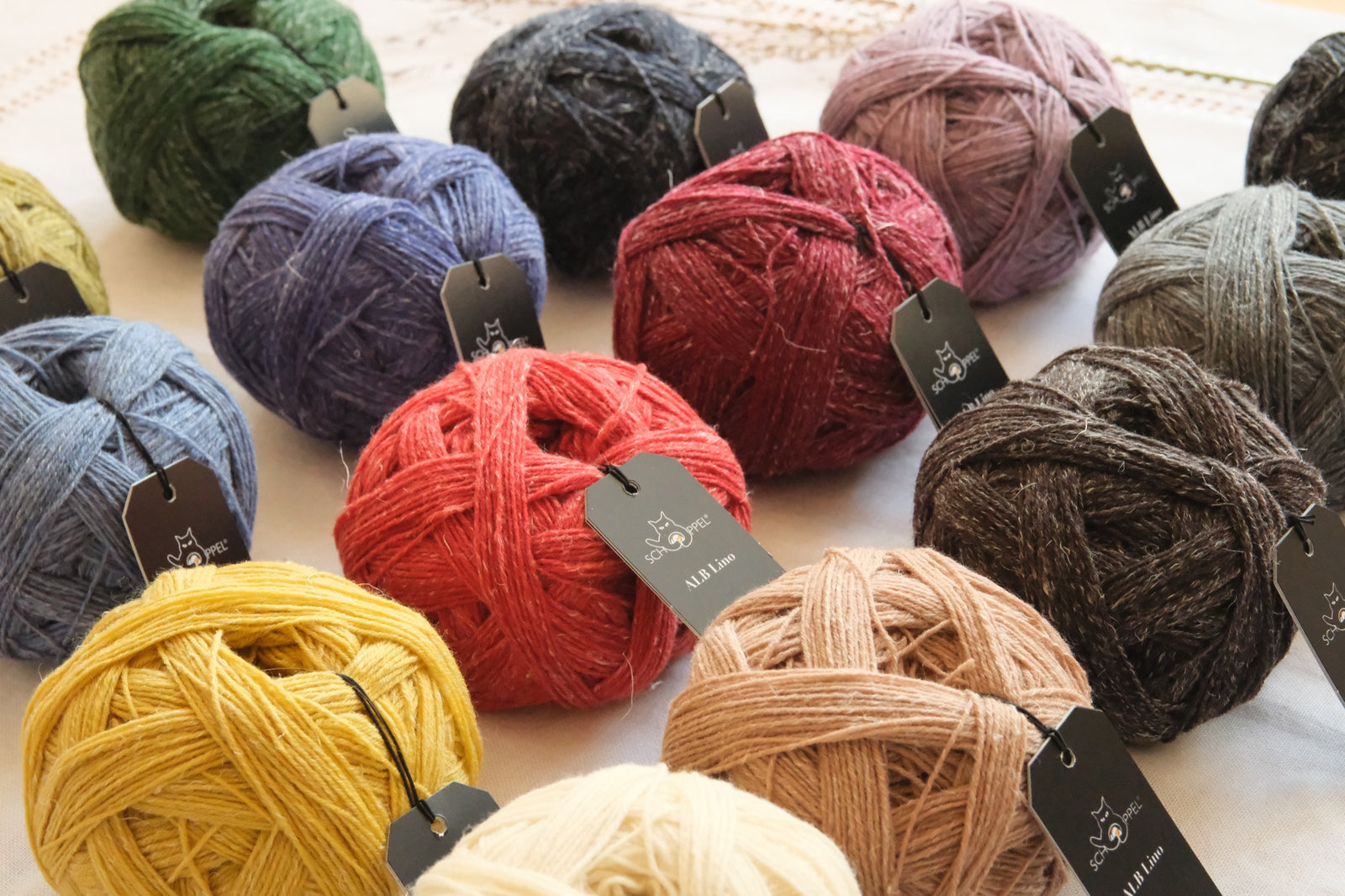
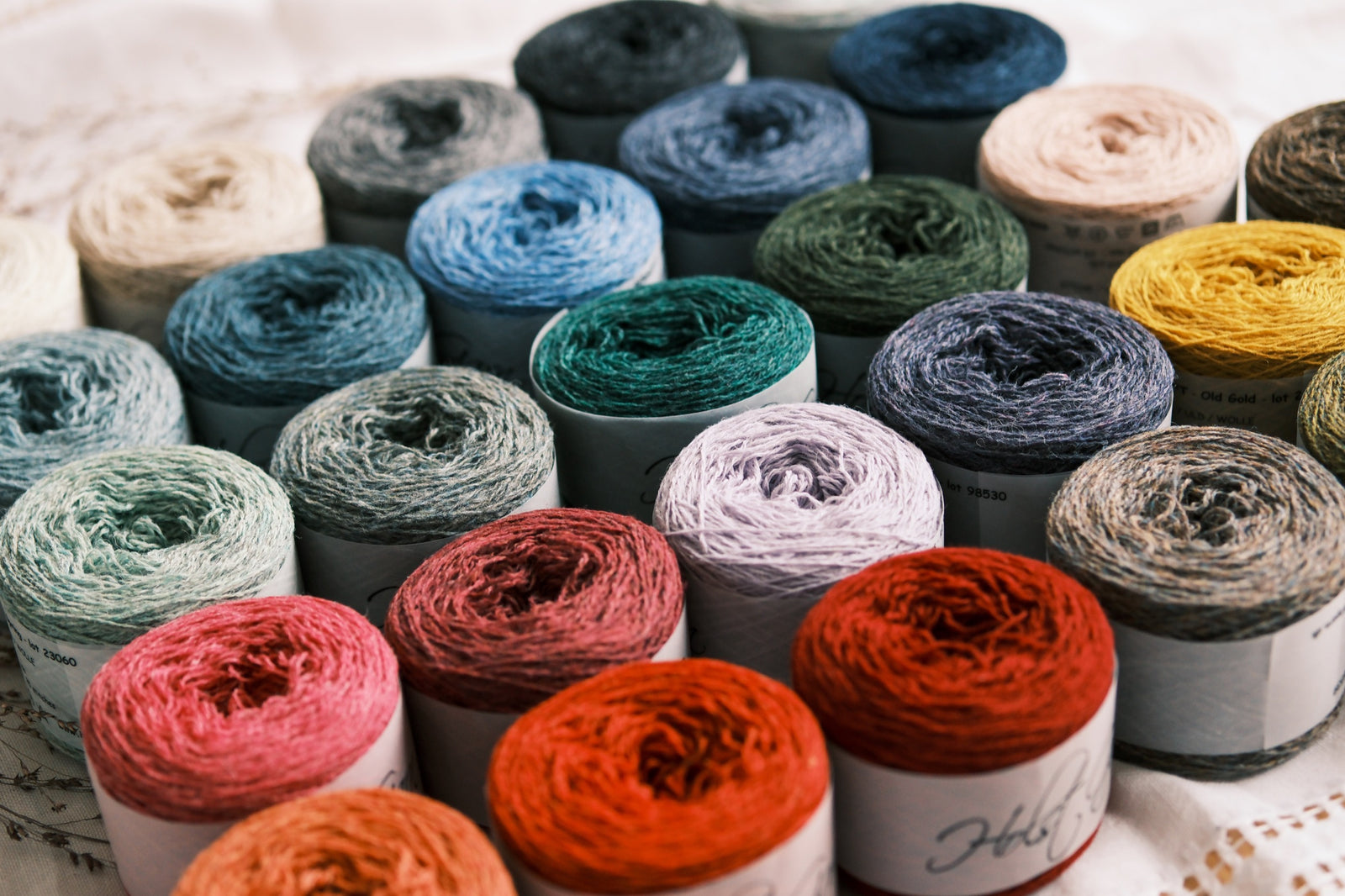
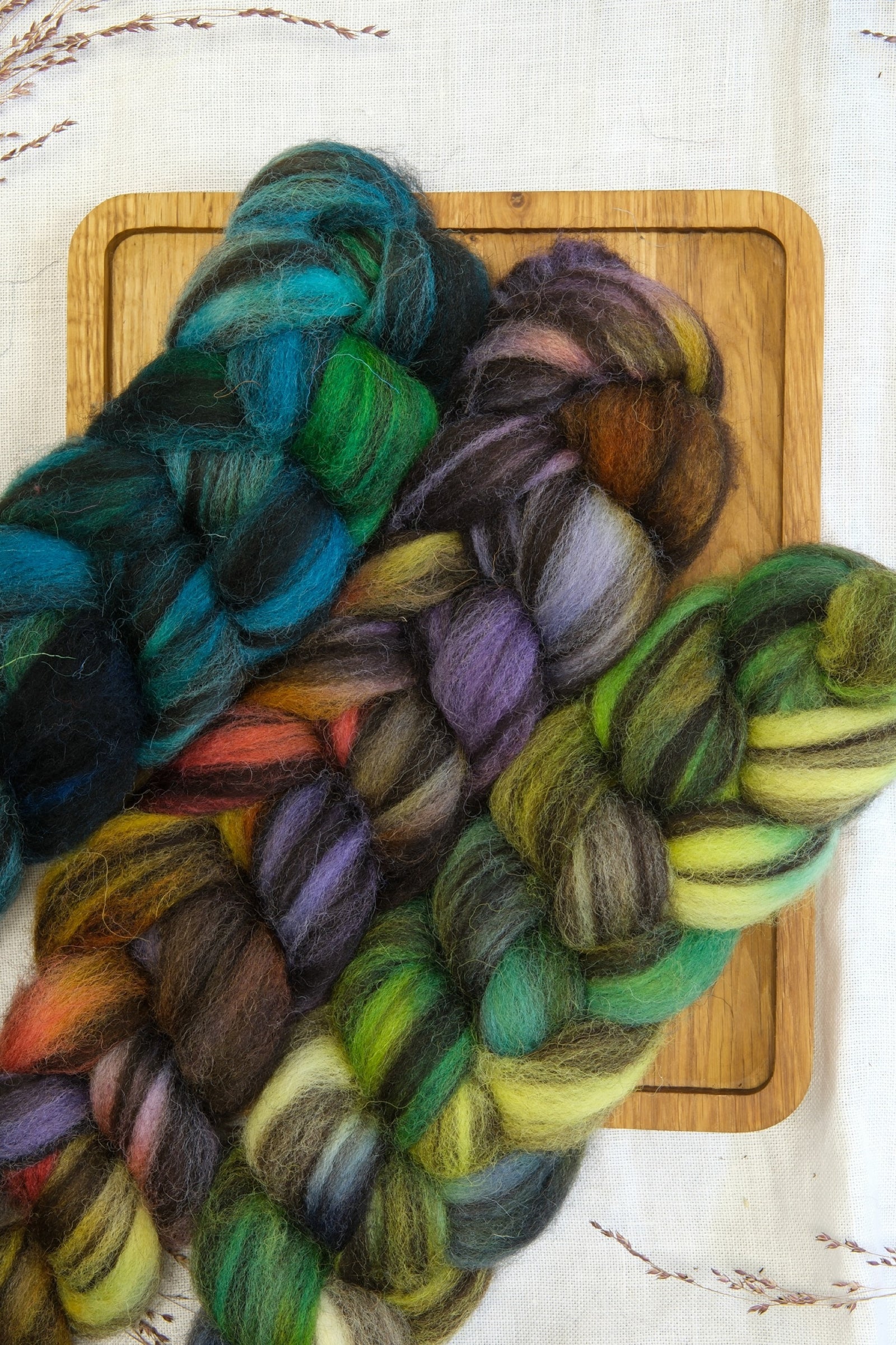
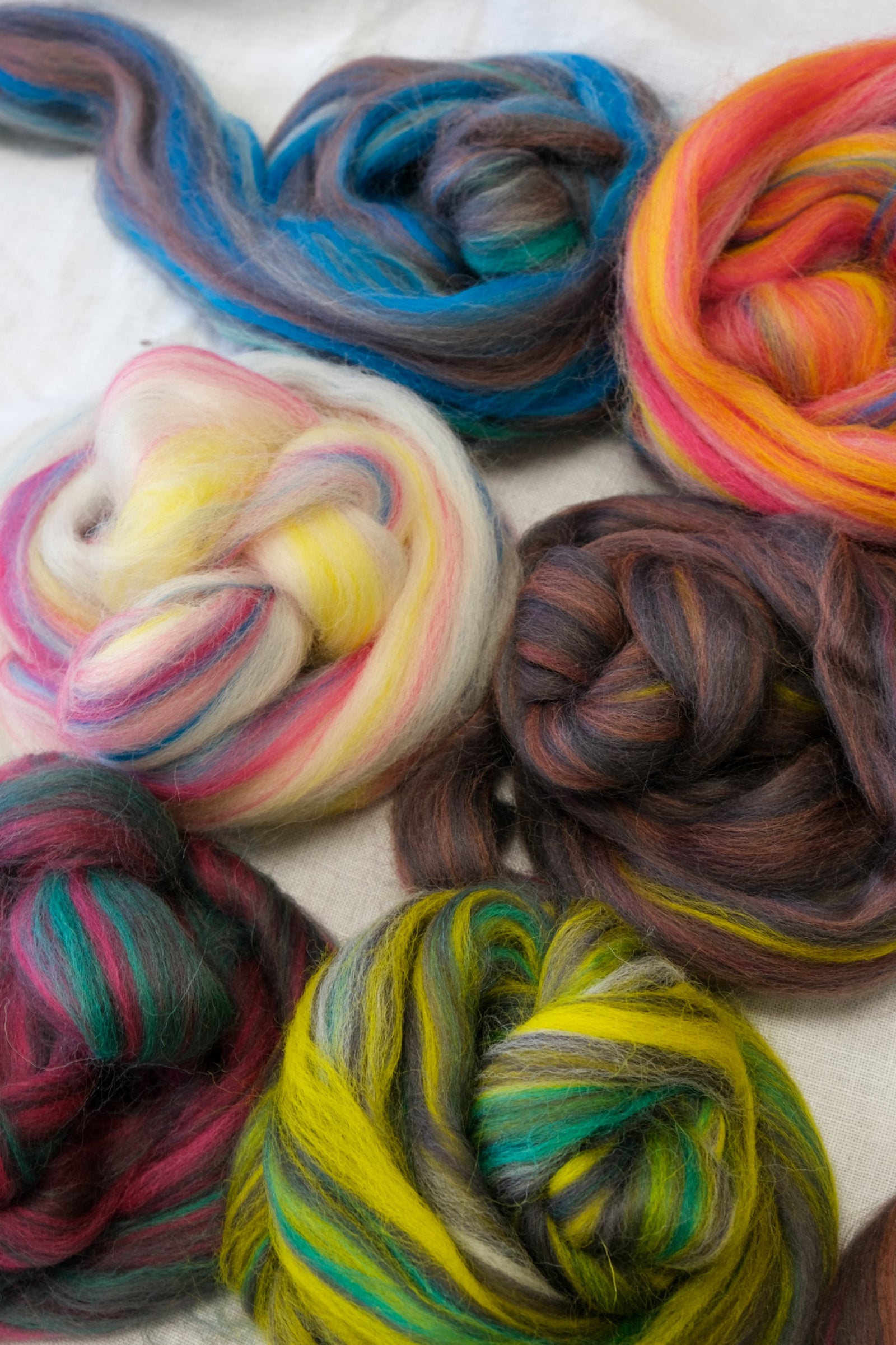
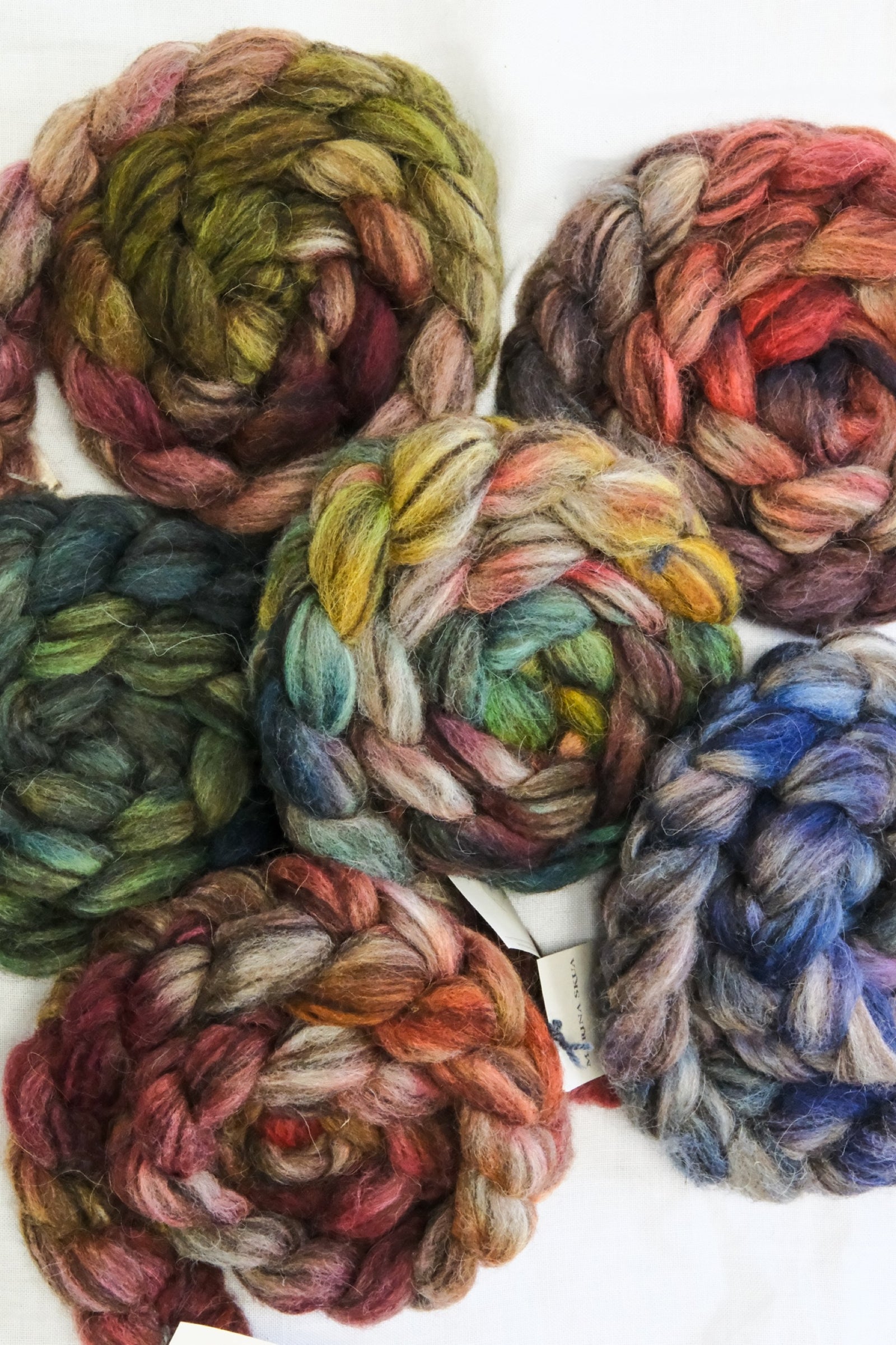
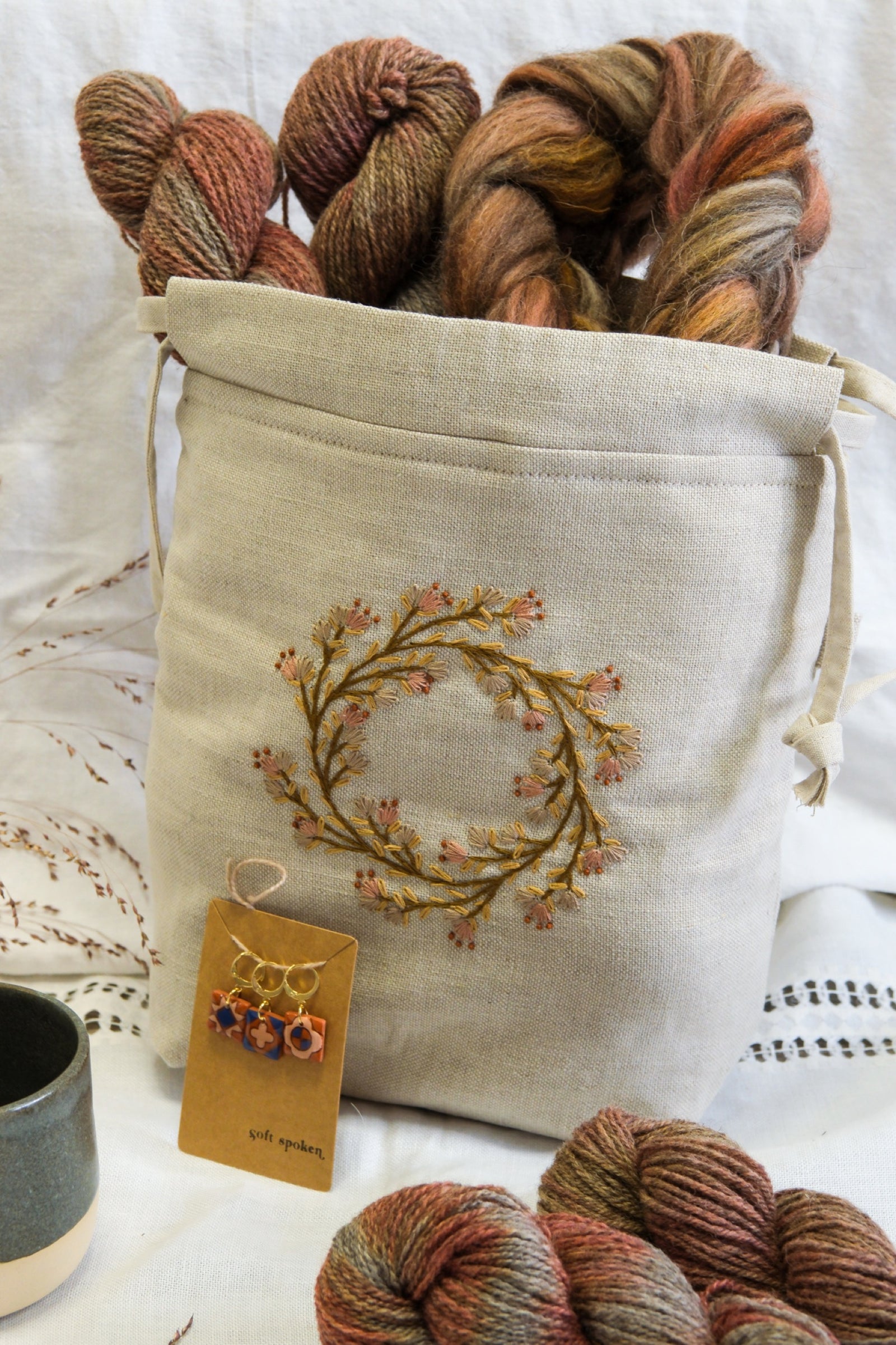
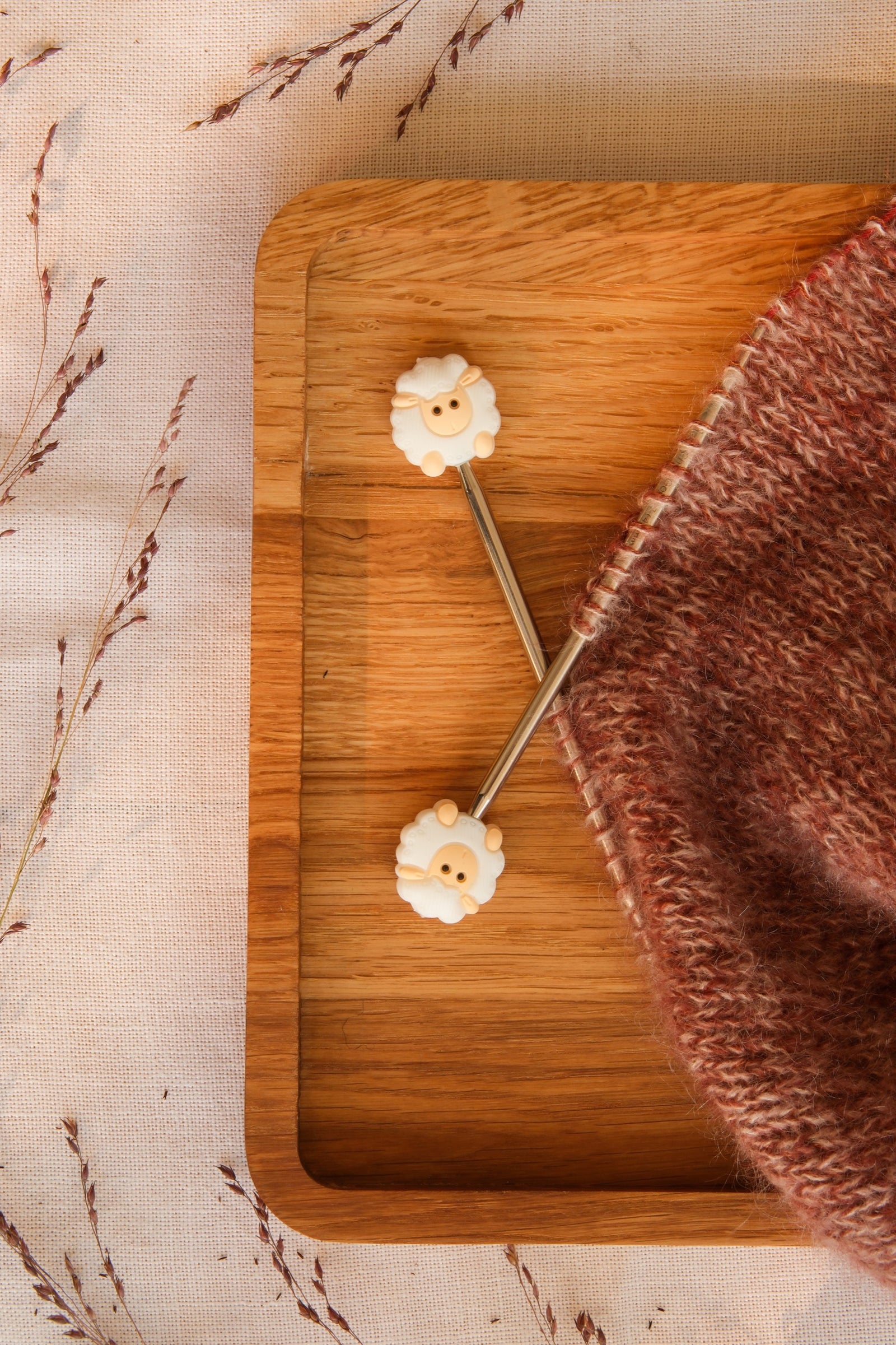
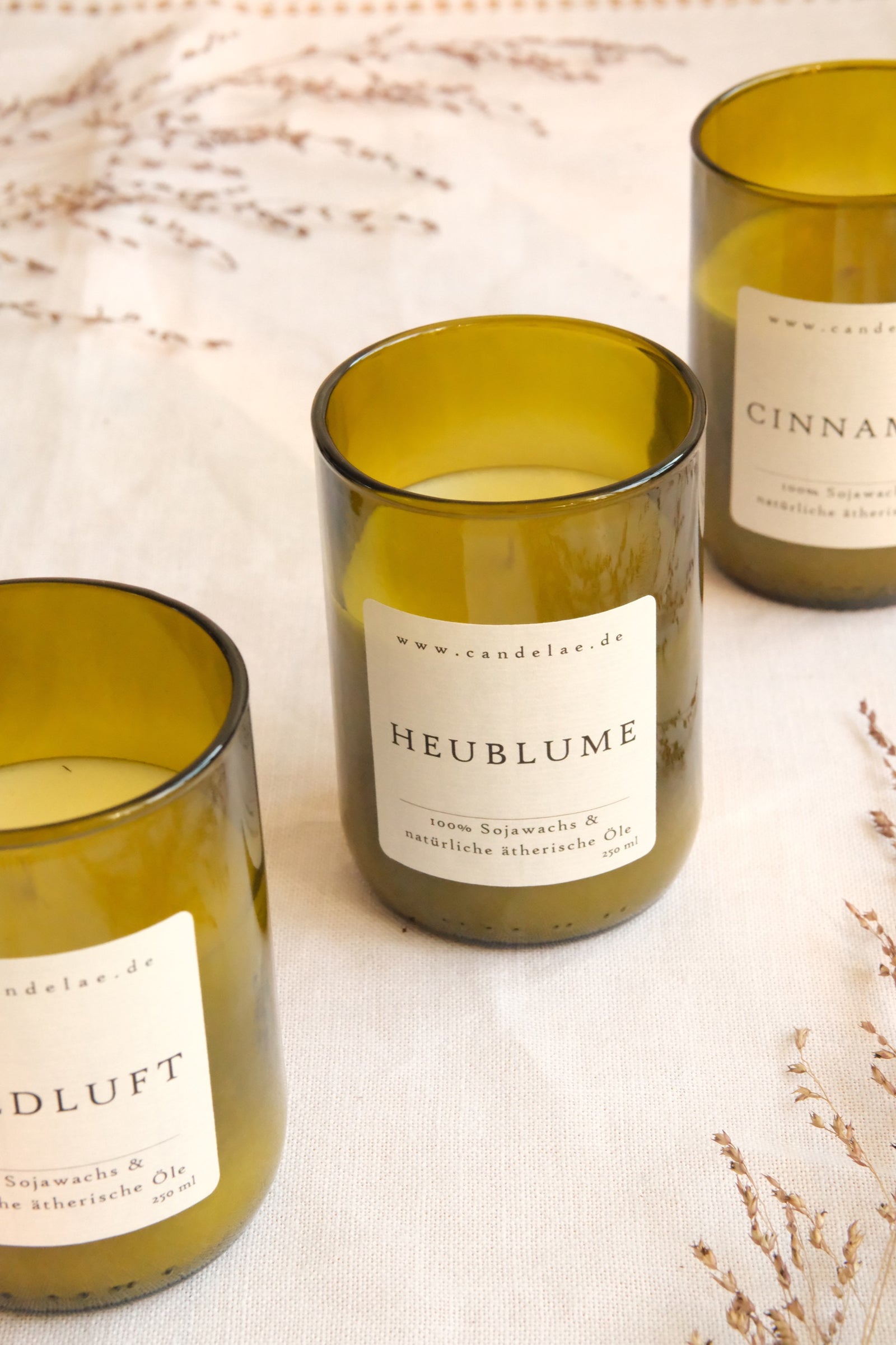
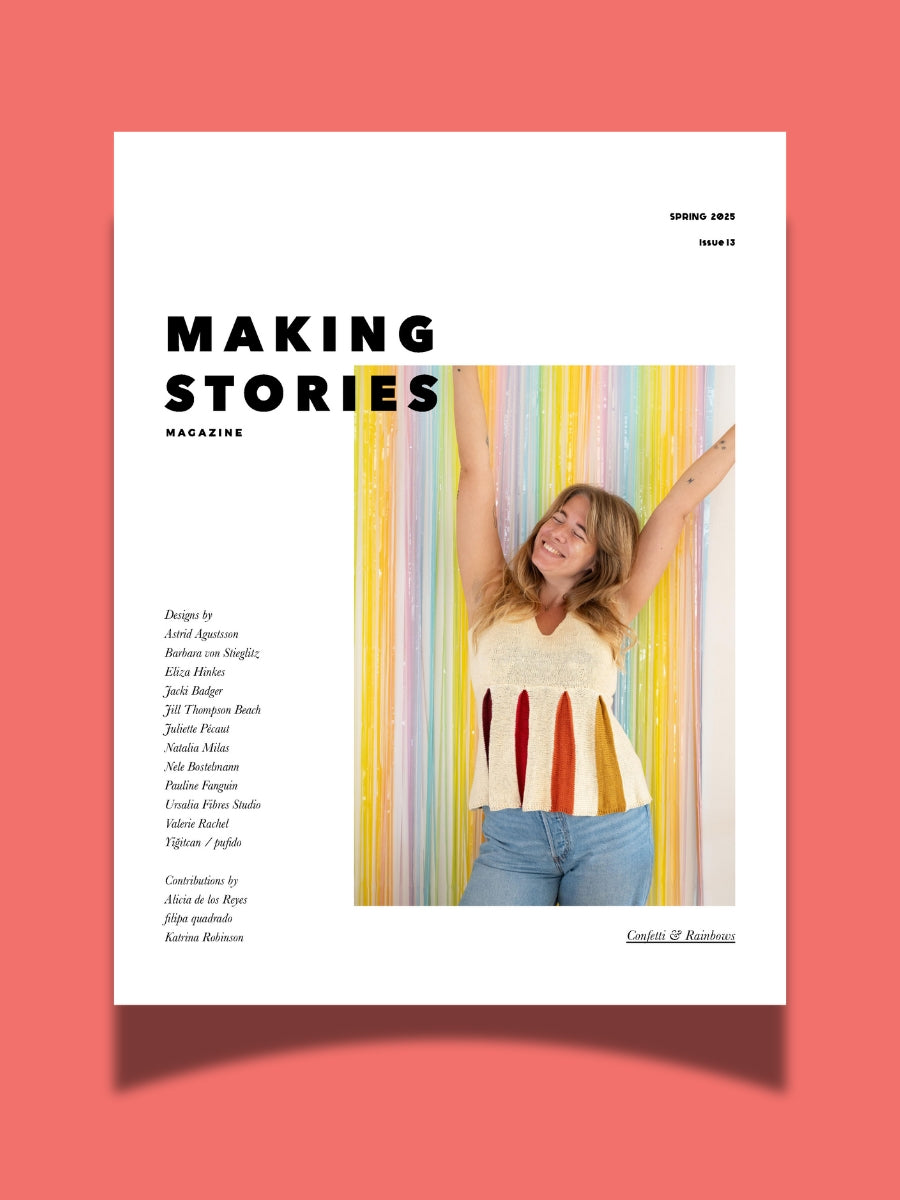
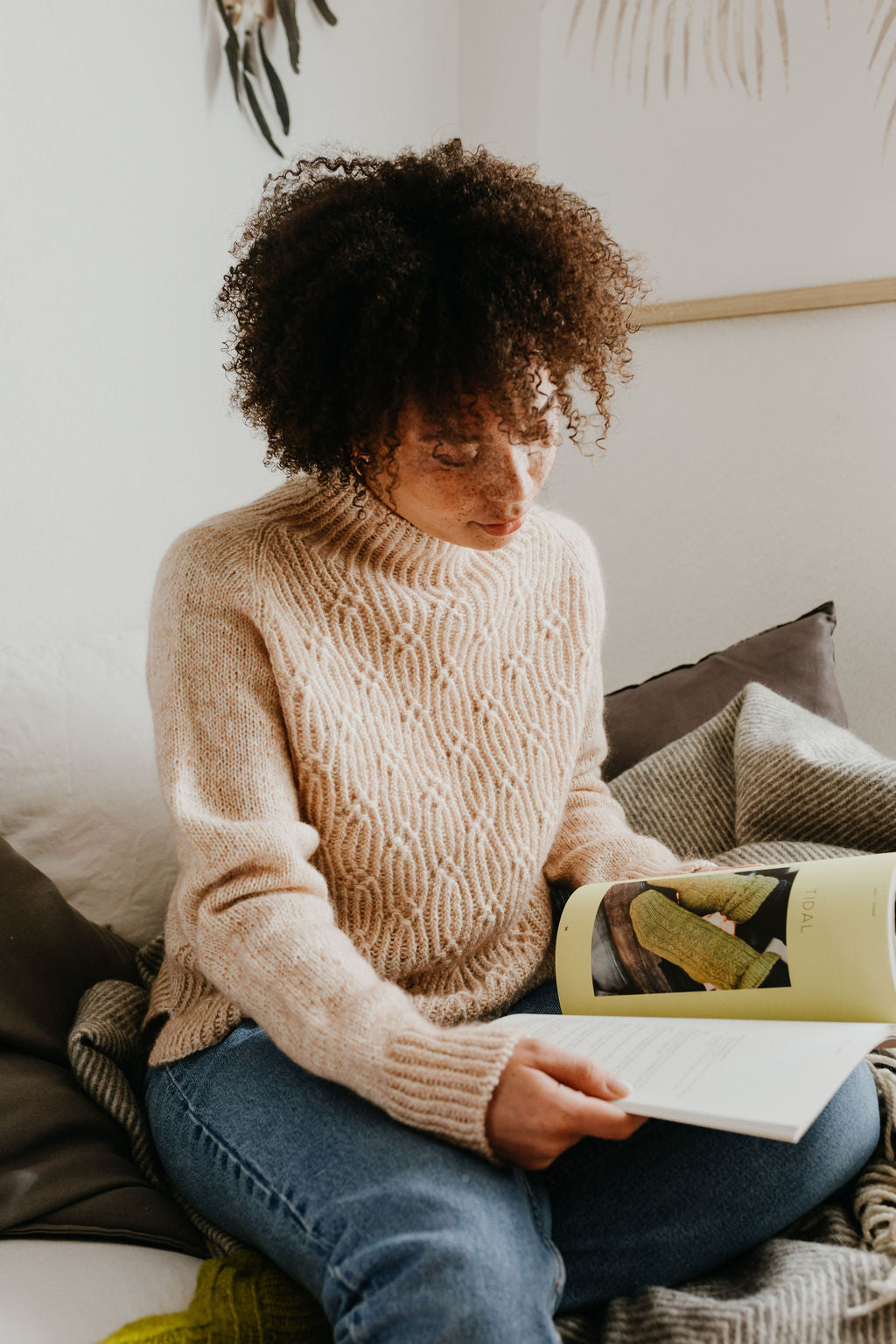
Barb Brown
May 03, 2023
I really like linen (and hemp) for warm weather tops. But for the longest while it was only available in worsted weight or heavier. I see it is now more readily available in sport and fingering and am going to purchase some shortly.
I have also found a wool/linen blend designed for socks, and am currently knitting a pair. I have a sensitivity to nylon, so I am over the moon about this yarn.